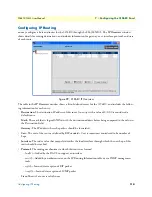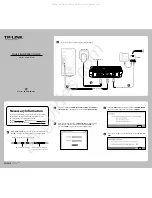
Configuring the T1/E1 Ports
100
FS6300 NMS User Manual
6 • Configuring the 3096RC Card
–
Line Coding:
The type of Zero Code Suppression used on the link.
• dsx1JBZS(1)—Jammed Bit Zero Suppression, in which the AT&T specification of at least one pulse
every 8 bit periods is literally implemented by forcing a pulse in bit 8 of each channel. Thus, only
seven bits per channel, or 1.344 Mbps, is available for data. This feature is not currently implemented.
• dsx1B8ZS(2)—The use of a specified pattern of normal bits and bipolar violations which are used to
replace a sequence of eight zero bits. The most common coding for T1 circuits.
• dsx1HDB3(3)—This line coding is used with most E1 circuits today.
• dsx1ZBTSI(4)—May use dsx1ZBTSI, or Zero Byte Time Slot Interchange. This feature is not cur-
rently implemented.
• dsx1AMI(5)—Refers to a mode wherein no zero code suppression is present and the line encoding
does not solve the problem directly. In this application, the higher layer must provide data which
meets or exceeds the pulse density requirements, such as inverting HDLC data.
• other(6)—This feature is not currently supported.
–
Receive Equalizer:
The equalization used on the received signal. Long haul signals should have the
equalization set for more. Short haul signals require less equalization.
–
Receiver Sensitivity:
The minimum voltage at which the WAN port will sense that the signal is avail-
able. This variable is only used if the
Receiver Equalization
is set to
ON
.
–
Line Build Out:
The T1 or E1 pulse levels used by the T1/E1 ports:
• triState(0)—When the T1/E1 port is not in use, you may want to place the port in tri-state mode.
While in this setting, the input lines to the port are placed in high impedance protection mode.
• e1pulse(1)—Used when connecting the T1/E1 port to E1 lines.
• t1pulse0dB(2)—Strong T1 pulse amplitude.
• t1pulse-7dB(3)—Medium T1 pulse amplitude.
• t1pulse-15dB(4)—Weak T1 pulse amplitude.
–
Yellow Alarm Format:
The standard used to transmit and identify the Yellow Alarm.
• link YellowFormatBit2(1)—Bit-2 equal zero in every channel
• link YellowFormatDL(2)—FF00 pattern in the Data Link
• link YellowFormatFrame12FS(3)—FS bit of frame 12
–
Fdl:
implementation of FDL is being used, if any. FDL applies only to T1 circuits.
• other(1)—Indicates that a protocol other than one following is used.
• dsx1Ansi-T1-403(2)—Refers to the FDL exchange recommended by ANSI.
• dsx1Att-54016(3)—Refers to ESF FDL exchanges.
• dsx1Fdl-none(4)—Indicates that the device does not use the FDL.
If one of the E1 line types has been selected, set
Fdl
to
dsx1Fdl-none(8)
.
3.
Click
Submit
to commit your changes.















































